Abstract
A sensitive and diagnostically applicable conjugate for the rapid and accurate detection and identification of Cryptococcus neoformans has been developed. C. neoformans rabbit antisera were produced by 14 daily intravenous injections of 36 million cells for a total dosage of approximately 500 million cells. Cross-staining reactions with species of Cryptococcus other than C. neoformans, as well as with Candida species, were eliminated by adsorption of the C. neoformans conjugate with cells of C. diffluens and C. krusei.
Full text
PDF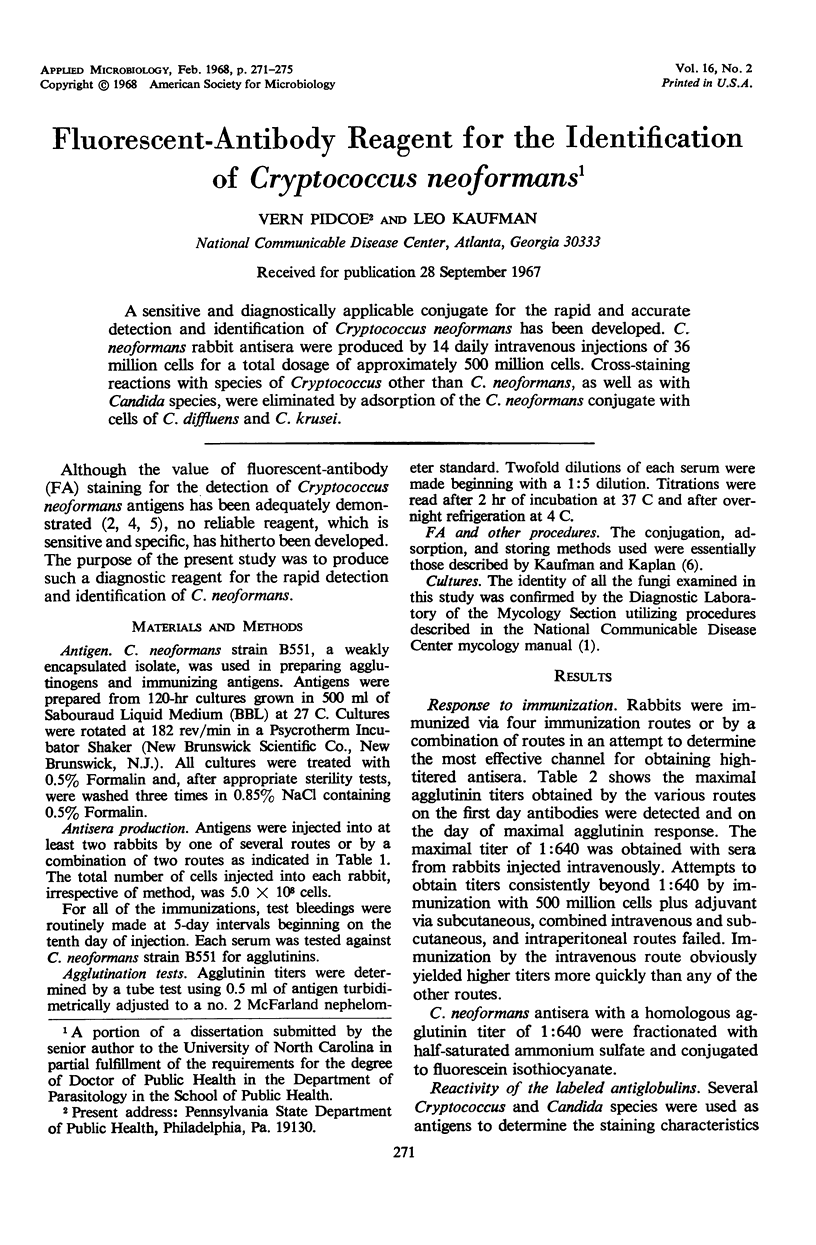
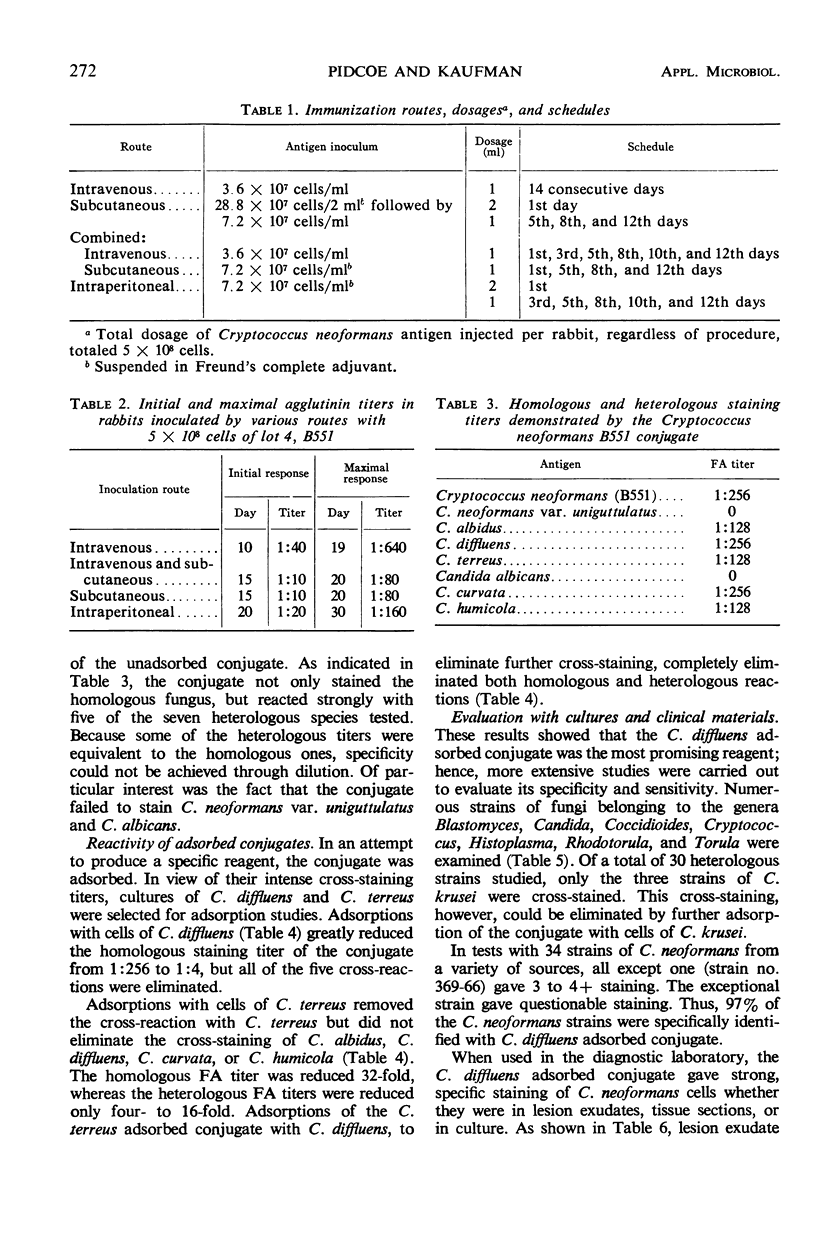
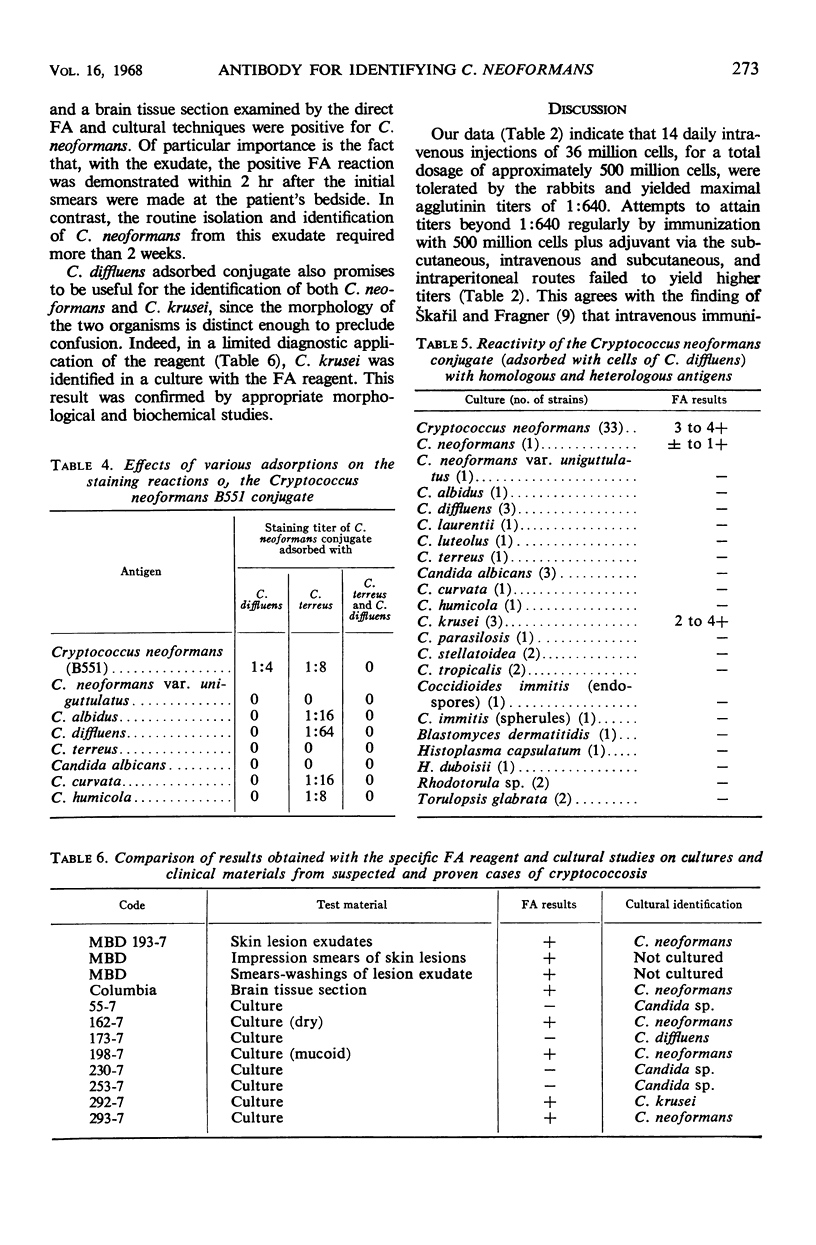
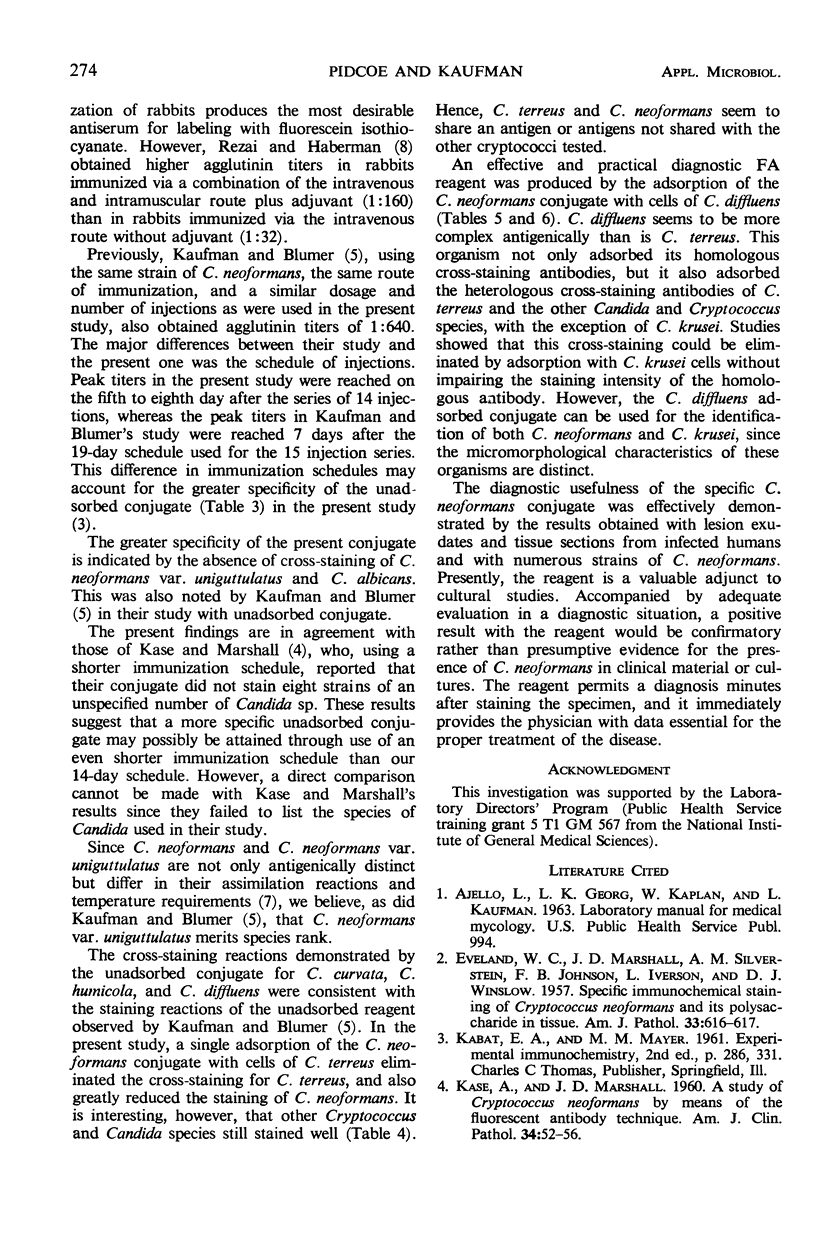
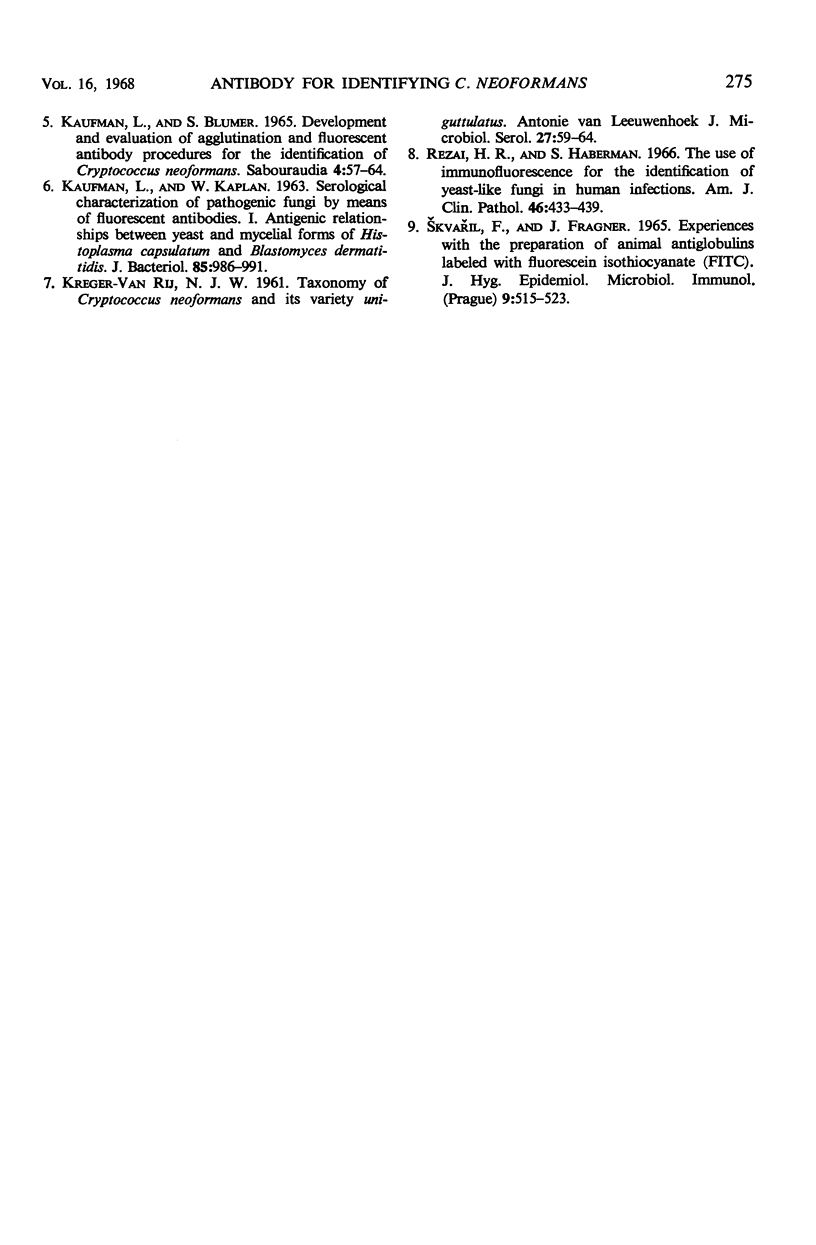
Selected References
These references are in PubMed. This may not be the complete list of references from this article.
- KASE A., MARSHALL J. D., Jr A study of Cryptococcus neoformans by means of the fluorescent antibody technic. Am J Clin Pathol. 1960 Jul;34:52–56. doi: 10.1093/ajcp/34.1.52. [DOI] [PubMed] [Google Scholar]
- KAUFMAN L., KAPLAN W. SEROLOGICAL CHARACTERIZATION OF PATHOGENIC FUNGI BY MEANS OF FLUORESCENT ANTIBODIES. I. ANTIGENIC RELATIONSHIPS BETWEEN YEAST AND MYCELIAL FORMS OF HISTOPLASMA CAPSULATUM AND BLASTOMYCES DERMATITIDIS. J Bacteriol. 1963 May;85:986–991. doi: 10.1128/jb.85.5.986-991.1963. [DOI] [PMC free article] [PubMed] [Google Scholar]
- KREGER-VAN RIJ N. J. Taxonomy of Cryptococcus neoformans and its variety uniguttulatus. Antonie Van Leeuwenhoek. 1961;27:59–64. doi: 10.1007/BF02538423. [DOI] [PubMed] [Google Scholar]
- Kaufman L., Blumer S. Development and evaluation of agglutination and fluorescent antibody procedures for the identification of Cryptococcus neoformans. Sabouraudia. 1965 Jun;4(2):57–64. doi: 10.1080/00362176685190171. [DOI] [PubMed] [Google Scholar]
- Rezai H. R., Haberman S. The use of immunofluorescence for identification of yeastlike fungi in human infections. Am J Clin Pathol. 1966 Oct;46(4):433–439. doi: 10.1093/ajcp/46.4.433. [DOI] [PubMed] [Google Scholar]
- Skvaril F., Frágner J. Experiences with the preparation of animal antiglobulins labelled with fluorescein isothiocyanate (FITC). J Hyg Epidemiol Microbiol Immunol. 1965;9(4):515–523. [PubMed] [Google Scholar]


